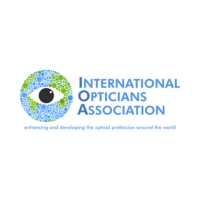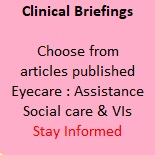Novel Therapies for Glaucoma
Courtesy of Prova Education
Omidenepag Isopropyl (OMDI)
OMDI is a novel prostaglandin E2 receptor agonist that increases aqueous outflow through the trabecular and uveoscleral pathways.The AYAME study was a phase 3, randomized noninferiority trial that evaluated the efficacy and safety of OMDI in Jap-anese patients with primary open-angle glaucoma (POAG).1 The purpose of the study was to compare the intraocular pressure (IOP)-lowering effects of OMDI 0.002% to latanoprost 0.005% at dose of one drop once daily at night for 4 weeks.
Eligible patients were 20 years or older with a diagnosis of bilateral POAG or ocular hypertension with a visual acuity of 20/100 on a Snellen chart. Those with advanced visual filed loss, recent ocular surgery, a history of ocular inflammation and retinal pa-thology, or conditions interfering with accurate Goldmann applanation tonometry were excluded.
After a washout period of 1-4 weeks, a total of 190 patients were random-ized to either OMDI or latanoprost, with 89 completing the study in the OMDI group and 94 completing the study in the latanoprost group (Figure 1). IOP was measured at 9:00 AM, 1:00 PM, and 5:00 PM at weeks 1, 2, and 4.
The primary endpoint was the change from baseline in mean diurnal IOP at week 4. The noninferiority margin for OMDI compared to latanoprost was 1.5 mmHg.1

Figure 1. AYAME study design.1
Baseline characteristics were comparable between the 2 study groups.1 At week 4, least squares mean reduction IOP for OMDI, averaging 5.93, plus or minus a standard error of 0.23 mmHg, was found to be noninferior to that of latanoprost, which averaged 6.56, plus or minus a standard error of 0.22 mmHg. The treatment difference between the 2 groups was statistically, significant (P = 0.0477) but it is questionable whether a 0.63 mmHg difference is truly clinically significant.No serious adverse events, as determined by the investigators, were observed in either group. The incidence of adverse event was higher in the OMDI group than that in the latanoprost group.
The most common ocular adverse events were conjunctival hyperemia (24.5%), corneal thickening (11.7%), and photophobia (4.3%), occurring in all cases more frequently in the OMDI group. In summary, after 4 weeks of treatment, OMDI was shown to be noninferior to latanoprost for IOP reduction in patients with ocular hypertension or POAG while exhibiting good tolerability.1
References
1. Aihara M, Lu F, Kawata H, Iwata A, Odani-Kawabata N, Shams NK. Omidenepag isopropyl versus latanoprost in primary open-angle glaucoma and ocular hypertension: the phase 3 AYAME study. Am J Ophthalmol. 2020;220:53-63.























